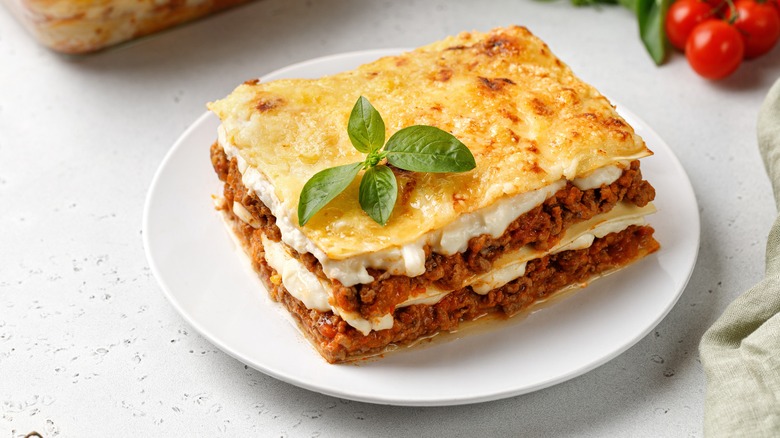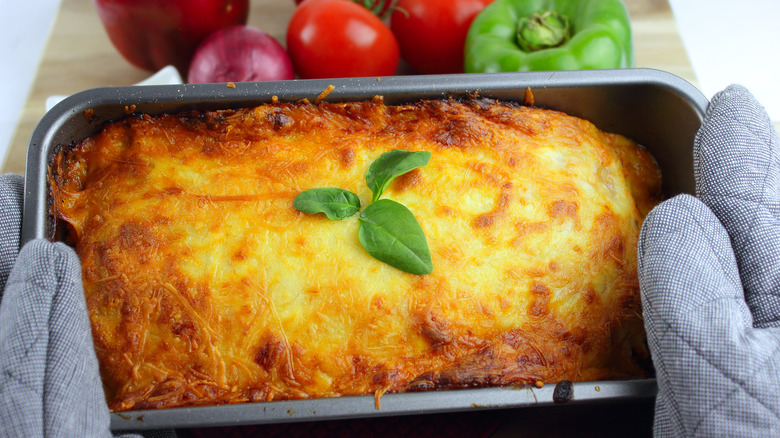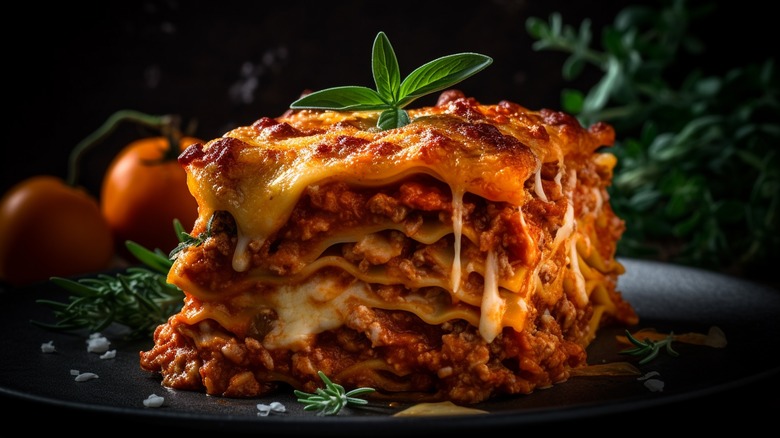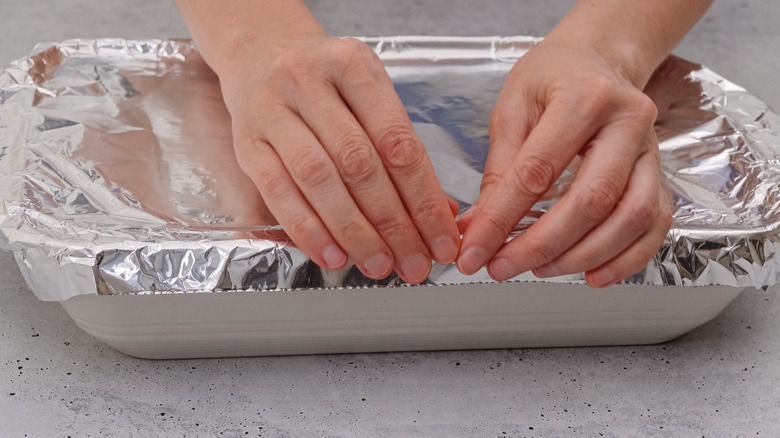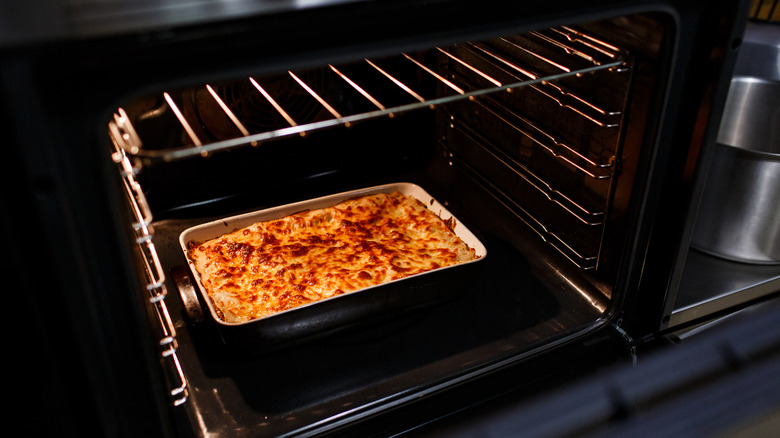How To Reheat Lasagna In The Oven For Crispy, Bubbly Results
No dish might be as effective at feeding a crowd as lasagna. Few people are averse to the creamy, savory flavors in this dish, and just one casserole tray can yield up to a dozen servings. Combined with the fact that you can easily dress up lasagna with added ingredients such as pancetta or béchamel sauce, you have the perfect meal to serve at your next dinner party or potluck event. However, you will inevitably encounter times when you end up with leftovers on hand, and your next challenge will be deciding how to reheat them.
While cold, straight-out-of-the-fridge lasagna tastes perfectly fine on its own, this shouldn't deter you from reheating this dish at home. But before you fire up your stove or reach for the microwave, turn to your oven instead for optimized, bubbly results with a delightfully crisp topping that won't leave you with random cold spots or burnt noodles.
Gather the appropriate tools
To reheat lasagna, you only need your leftovers and a few additional kitchenware items: an oven-safe tray or container, aluminum foil, oven mitts, and a serving utensil. Keep in mind that if you froze your lasagna, you can either reheat it straight out of the freezer, or have it defrost in the fridge the night before.
For the oven-safe tray, you'll want a pan that is wide and deep enough to accommodate multiple layers of pasta noodles, sauce, and cheese. American chef Michael Symon recommends a 9 x 13-inch casserole pan for lasagna, as it's large enough to feed a sizable crowd, and small enough to keep all the ingredients tightly packed together in layers. The size matters less when you have one or two portions' worth of leftovers, but when you have a whole pan to reheat, you'll want to ensure that your food fits neatly in one place. As for the utensil, lasagna servers are typically considered the best tool to dish up this food, but any sturdy spatula should be able to do the trick.
Add some extra sauce and cheese to keep things bubbly
One way to combat moisture loss while reheating lasagna is by drizzling any leftover sauce you might have in the kitchen over it. The additional liquid will not only prevent your noodles from drying out under the dry heat of the oven, but also introduce fresh flavors into your dish. You'll want to use a sauce as close to the original one used in your recipe — for example, a creamy béchamel for a white casserole, as in this spinach and ricotta lasagna, and a meaty marinara for a more traditional red one. You can also use water as a substitute during this step, but keep in mind that it might dilute the wet ingredients in your leftovers.
While cheeses are less effective at adding moisture to your leftover lasagna, they certainly add extra bubbliness and flavor during the reheating process. Michael Symon recommends using a blend of mozzarella and parmesan to add a crispy finish to the top of your lasagna, but feel free to use any type of cheddar that melts relatively easily and uniformly under heat.
Cover your lasagna with foil as your oven preheats
While baking at 350 degrees Fahrenheit will likely take at least half an hour to warm up your lasagna, going slow reduces the chance that your leftovers will overcook. You can go a bit lower if you're particularly concerned about your leftovers drying out, but note that the USDA recommends reheating food at or above 325 degrees Fahrenheit.
As the oven starts to warm up, take the lasagna out of the fridge, add any additional ingredients of your choice, and transfer it to a baking tray. You can skip this step if you have stored your leftovers in an oven-safe container, but be aware that even the most heat-resistant glass kitchenware can shatter due to thermal shock. Let it warm up on the countertop for a bit to avoid this issue. Otherwise, use another type of ovenware and transfer your food there.
To combat moisture loss when reheating lasagna, many people cover their leftovers with a sheet of aluminum foil, as this traps in steam. While doing this, ensure that the cover does not touch the surface of your food. Once melted, any cheese at the top will stick to the aluminum and be difficult to separate, so insert a toothpick in your leftovers to keep the two apart. You don't need to do this if the sides of your baking tray are tall enough, so try to find some deep ovenware before resorting to this trick.
Bake until your lasagna reaches the correct internal temperature
Once you've transferred your lasagna to an oven-safe tray and covered it with aluminum foil, you can bake it until it reaches an internal temperature of 165 degrees Fahrenheit. This temperature ensures that your leftovers are pasteurized from any foodborne pathogens that may have latched onto your food since storage. Reheating in the oven will typically take about 45 minutes, but the actual time could be shorter or longer depending on the initial temperature of your leftovers.
After placing your lasagna in the oven, you have the option of removing the aluminum foil around five to 10 minutes before the end of baking to achieve a delectably crunchy exterior. While it's not necessary to add extra ingredients after removing the cover, sprinkling on even more cheese never hurts. Whatever you choose, ensure that you let your reheated lasagna rest for approximately 10-15 minutes after baking. This resting period allows the noodles, cheese, and sauce to firm up, resulting in delectable leftovers that will hold together well under the touch of a fork or knife.

